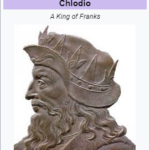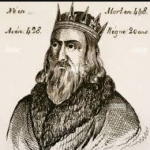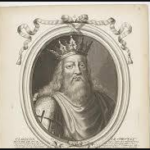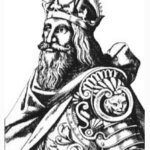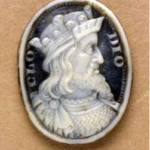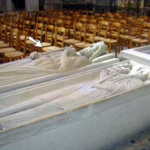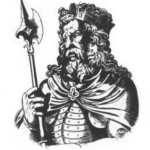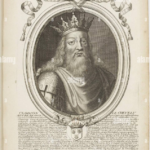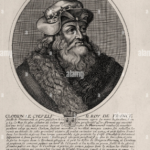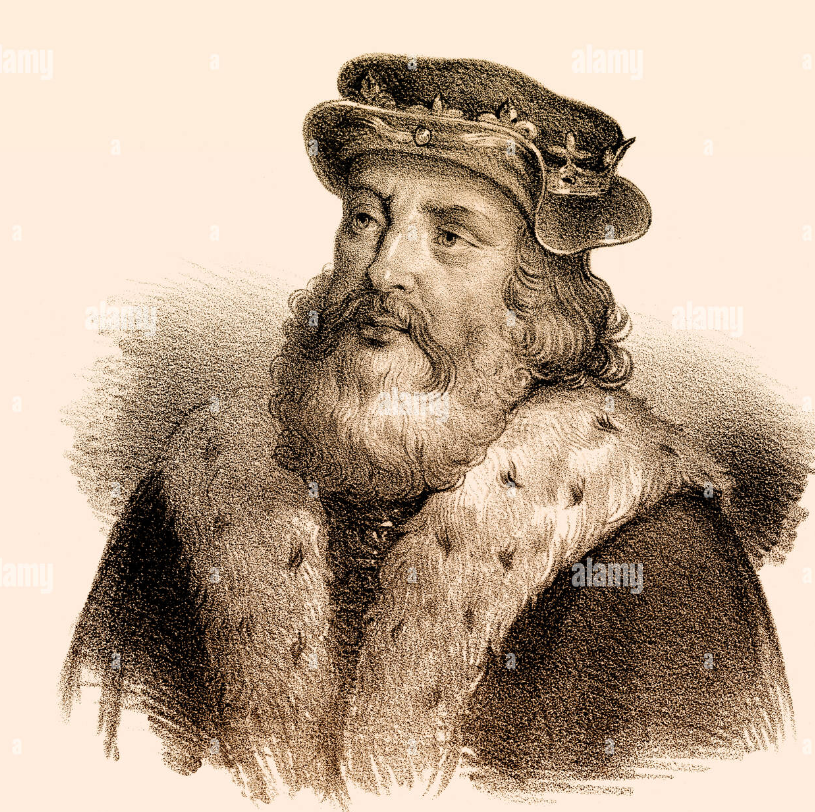
Clodion Le Chevelu
Date of Birth
395
Place of Birth
North Rhine-Westphalia, Germany
Towns / Cities Moved Into
-
Known Occupation
King of the Salian Franks
Religion
-
Spouse
Death Information
Year of death
448
Place of death
Cambrai, Nord-Pas-de-Calais, France
Cause of death
Died in the Battle of Helena
Obituary

Parents

Pharamond King of Franks

-
Marital Status


Married Basina DeThuringia
419
Siblings

Children

Narrative / Story
Born in the year 395 in the region of North Rhine-Westphalia, Germany, Clodion Le Chevelu, also known as “the Long-Haired King,” embarked on a journey that would etch his name in the annals of history. His birth, in the shadow of the declining Roman Empire, predestined him for a life intertwined with power struggles and territorial conquests. Clodion’s lineage was noble, believed to be the son of Pharamond, a figure shrouded in legend and recognized as the King of the Franks, and Argotta of the Salic Franks, adding to the mystique of his persona.
The early years of Clodion’s life were marked by the brewing tensions and shifting powers in the Roman Empire. His ascension to power began around 428 when he led an invasion into the Roman Empire, signaling the start of his reign as the King of the Salian Franks. This bold move was not just a military campaign; it was a statement of intent, marking the rise of a new power in the region. Clodion established his rule in Northern Gaul, an area that had already seen the settlement of other Salian groups. Despite facing resistance from Roman forces, Clodion’s strategic acumen and leadership skills enabled him to maintain his position and, within a few years, expand his kingdom southward to the Somme River.
Clodion’s personal life was as eventful as his military campaigns. In 419, he married Basina DeThuringia, and together they had a son, Sigimberus I Bishop. His familial ties extended to his brother, Chlodegar de Lorraine, who played a significant role as the King of the Franks at Cologne. These relationships were not just bonds of blood but also alliances that helped consolidate his power and influence in the region.
The socio-economic landscape during Clodion’s reign was complex and dynamic. As a ruler during the decline of the Roman Empire, he navigated a period marked by the migration of tribes, shifting power dynamics, and the transformation from Roman to medieval societal structures. Leading a Germanic tribe, Clodion faced the challenges of establishing authority in a region transitioning from Roman rule. His leadership involved managing tribal alliances, dealing with Roman administrative structures, and navigating the complex socio-political landscape of his time.
Clodion’s military exploits are a testament to his prowess as a warrior and a strategist. His campaigns against the Roman forces were marked by tactical brilliance and a deep understanding of the art of war. However, his reign was not without its challenges. The constant need to defend and expand his territory meant that Clodion’s life was one of perpetual conflict and strategic maneuvering.
Tragically, Clodion’s reign came to an abrupt end in 448. He met his demise at the Battle of Vicus Helena, where he was defeated by Flavius Aëtius, the commander of the Roman Army in Gaul. This battle marked the end of his 20-year reign and left a void in the power structure of the region. Clodion’s death in battle added to his legend, portraying him as a warrior king who fought valiantly to the end. He was buried in Cambrai, Nord-Pas-de-Calais, France, a place that would forever be associated with his legacy.
Clodion’s impact on history extends far beyond his lifetime. He is remembered as a pivotal figure in the Merovingian dynasty, with his descendants playing significant roles in shaping the medieval European landscape. His reign symbolizes the transition from Roman to Frankish rule in Gaul, marking a significant shift in the region’s history.
Reflecting on Clodion’s life offers a window into a transformative period in European history. His story is one of conquest, leadership, and the complexities of ruling during a time of significant change. The narrative of Clodion Le Chevelu continues to captivate historians and genealogists, providing insights into the early medieval era and the dynamics that shaped it.
In conclusion, Clodion Le Chevelu’s life and reign were emblematic of a period of great upheaval and transformation. His legacy, marked by military conquests, strategic leadership, and a profound impact on the course of European history, continues to be a subject of fascination and study. His story, woven into the fabric of early medieval Europe, remains an enduring testament to the complexities and intrigues of his time.
